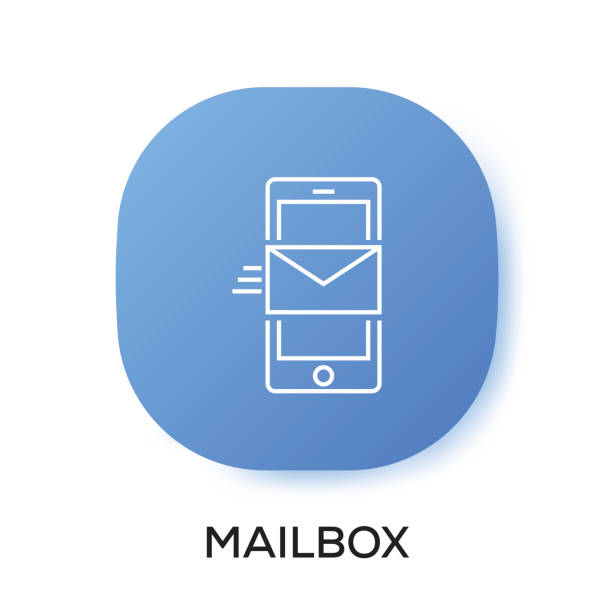BLOG
Push vs Fetch Mail: Choosing the Right Email Sync Method

Email is at the heart of how we communicate, and the way our devices handle messages has a huge impact on responsiveness, battery life, and overall productivity. When comparing push vs fetch mail, the main difference lies in how messages are delivered to your inbox. Push email allows the server to deliver messages in real time, while fetch requires your device to periodically check for new mail. Although the distinction may sound small, the choice between these two methods can shape your experience with email apps on iPhones, Android devices, and desktop clients.

Understanding Push Email
Push email functions almost like a text message. Instead of your phone or computer constantly checking for new mail, the email server notifies your device the instant a new message arrives. This is possible through technologies like Exchange ActiveSync or IMAP IDLE, which maintain a constant, lightweight connection between the server and the mail client.
For users who rely on instant communication—such as professionals who can’t afford to miss critical updates—push email is the gold standard. With push enabled, an Outlook or iCloud account can deliver mail the moment it arrives at the server, creating a true real-time experience.
How Fetch Email Works
Fetch, on the other hand, puts the responsibility on your device. Instead of waiting for the server to send a signal, the mail app checks at scheduled intervals, like every 15 minutes, every 30 minutes, or once an hour. Some devices also offer manual fetch, meaning you only see new emails when you open the inbox and trigger a refresh.
This system works well for accounts that don’t support push—such as certain Gmail configurations on iOS—or for users who don’t mind slight delays. It also provides more control, since you can decide how often your phone connects to the server. For example, setting a longer interval reduces background activity, which can extend battery life on older devices.
Comparing Performance and Battery Impact
The debate around whether push or fetch consumes more power is ongoing. Push mail requires a constant connection to the server, which means your device must stay in a low-power listening state. Fetch, on the other hand, actively wakes the device every time it checks for new messages.
In practice, the outcome depends on usage patterns. If you receive dozens of emails per hour, fetch with a short interval can drain more battery than push. But if you rarely get mail, a manual or hourly fetch schedule could be far more efficient. Users in forums often report different results, showing that network quality, provider support, and device type all play a role.

Email Protocols and Provider Support
Whether you can enable push or fetch often depends on the email protocol your provider uses. Services like iCloud and Exchange support push natively, delivering seamless real-time updates. Outlook also offers strong push integration, especially in enterprise settings.
Gmail presents a more complicated picture. On Android devices, Gmail generally supports push via the native app. However, on iOS, Gmail accounts added through the default Mail app often default to fetch because push is not fully supported outside the official Gmail app. This difference leads many iPhone users to notice delays in receiving new messages.
POP3 accounts add another wrinkle. Since POP3 was not designed for real-time synchronization, it usually operates in fetch mode only, requiring periodic polling for updates.
iPhone and iOS Mail Settings
On iOS devices, the choice between push and fetch can be configured in Settings → Mail → Accounts → Fetch New Data. Here, you can toggle push for supported accounts or select a fetch interval for services that don’t offer push. The available intervals usually include every 15 minutes, every 30 minutes, hourly, or manual.
This flexibility lets iPhone users balance responsiveness with battery efficiency. For example, you might enable push for your work Exchange account while setting personal accounts like Yahoo or Gmail to fetch hourly. That way, critical messages arrive instantly without overwhelming your device with unnecessary background activity.
Security and Reliability Considerations
Another factor to weigh is security. With push email, the server must maintain an open communication channel with your device, which can occasionally be interrupted by poor network conditions. Fetch, by contrast, is more predictable—it connects only when scheduled, reducing the risk of inconsistent delivery.
However, push has the advantage of reducing data overhead. Instead of repeatedly polling the server, push only transmits information when there is something new to deliver. This can lower mobile data usage for users on limited plans.

Choosing Between Push and Fetch
So, which is better? The answer depends on your needs:
- Choose push if you rely on time-sensitive communication, want real-time updates, and your provider supports it. This is ideal for professionals managing business email through Outlook or Exchange.
- Choose fetch if you prefer more control over synchronization, want to preserve battery, or use an account that doesn’t support push. Fetch is also a good choice for personal accounts where delayed delivery isn’t critical.
The best strategy may be a hybrid approach—using push for accounts where speed matters and fetch for less important accounts.
FAQs
What is the main difference between push and fetch mail?
Push delivers emails instantly from the server to your device, while fetch requires your device to check the server at scheduled intervals.
Does push email use more battery than fetch?
Not always. Push maintains a constant connection, but frequent fetch polling can drain more battery if set to short intervals.
Why don’t I get push email on my iPhone for Gmail?
On iOS, Gmail accounts added through the native Mail app usually default to fetch. To get push, you need to use the Gmail app.
Is IMAP IDLE the same as push?
IMAP IDLE isn’t true push, but it closely mimics it by keeping a session open and notifying the client of new messages in near real time.
Can I change fetch intervals on my device?
Yes. On iOS, you can choose every 15 minutes, 30 minutes, hourly, or manual. Android devices may have similar options depending on the mail app.
Which is more reliable: push or fetch?
Fetch can be more predictable on poor networks, but push is generally faster and more efficient when supported by your email provider.
Conclusion
The decision between push and fetch email comes down to balancing speed, battery life, and provider compatibility. Push ensures instant delivery and is the preferred option for business or critical communication, while fetch offers flexibility and control for less time-sensitive accounts. By understanding how each method works—and configuring your device settings accordingly—you can tailor your inbox to fit your lifestyle, whether that means real-time updates or scheduled checks.
BLOG
Cellucare Reviews: Real User Experiences Explained

Cellulite is a common concern for many women and men, affecting skin firmness and confidence. If you’re searching for effective solutions, Cellucare has gained attention as a potential cellulite reduction product.In this guide, we’ll explore cellucare reviews, real user experiences, ingredients, results, and expert opinions, helping you decide whether it’s worth adding to your skincare routine.
What Is Cellucare?
Cellucare is an anti-cellulite cream formulated to reduce the appearance of cellulite and improve skin firmness. It combines active ingredients targeting fat deposits, hydration, and skin elasticity.
Key benefits:
- Helps reduce visible cellulite
- Improves skin firmness and elasticity
- Provides hydration for smoother skin
- Can be used at home as part of daily skincare
Cellucare Ingredients and How They Work
Understanding the ingredients helps evaluate effectiveness and safety. Some common active components include:
- Caffeine: Stimulates blood flow and reduces fluid retention
- Retinol: Boosts collagen production, improving skin elasticity
- Plant extracts: Such as centella asiatica for skin repair
- Antioxidants: Protect against free radicals and skin damage
Expert opinion: Dr. Jane Smith, a dermatologist, notes, “Ingredients like caffeine and retinol can temporarily improve skin texture, but consistent use is key for noticeable results.
Cellucare Reviews and User Experiences
Before and After Results
Many users report visible changes after 4–6 weeks of regular use:
- Smoother skin texture
- Reduced appearance of orange-peel skin
- Firmer, more toned appearance
Table: Example of Cellucare Results from Real Users
| User | Duration of Use | Visible Results | Notes |
|---|---|---|---|
| Anna, 34 | 6 weeks | Moderate reduction in cellulite | Used daily, massaged into skin |
| James, 40 | 8 weeks | Slight firming | Combined with exercise |
| Maria, 29 | 4 weeks | Noticeable smoothing | Applied twice daily |
How to Use Cellucare for Best Results
- Apply daily to affected areas (thighs, buttocks, arms)
- Massage in circular motions for 5–10 minutes
- Pair with hydration and exercise for better outcomes
- Avoid broken skin or open wounds
Pro Tip: Consistency is key; skipping days may reduce effectiveness.
Expert References
- American Academy of Dermatology – Anti-cellulite treatment guidelines. Link
- Healthline – Cellulite causes and treatment options. Link
- Dermatology Times – Review of topical cellulite creams. Link
FAQ’s
Does Cellucare really work for cellulite?
Cellucare can temporarily reduce the appearance of cellulite and improve skin firmness with consistent use, especially when paired with a healthy lifestyle.
What are the side effects of Cellucare?
Most users report no side effects. Rarely, mild irritation or redness may occur due to active ingredients like retinol or plant extracts.
How long does Cellucare take to show results?
Visible improvements often appear in 4–8 weeks, depending on skin type, lifestyle, and usage frequency.
Is Cellucare worth buying?
If you’re looking for a topical, at-home anti-cellulite solution, Cellucare is a credible option with positive user reviews and dermatologically safe ingredients.
Cellucare vs other anti-cellulite creams
Compared to other creams, Cellucare offers a balanced formula of caffeine, retinol, and plant extracts, supporting both temporary smoothing and long-term skin health.
Conclusion
Cellucare reviews suggest that it can be an effective addition to your skincare routine for reducing the appearance of cellulite and improving skin firmness. While not a permanent cure, regular use combined with hydration, healthy diet, and exercise may provide noticeable results over time.
BLOG
What Are French Doors? Styles, Costs, and Benefits

If you’re planning a home renovation or searching for design inspiration, you’ve probably wondered: what are French doors and why are they so popular? French doors are more than just a stylish entryway. They combine natural light, functionality, and elegance, making them a favorite among homeowners, interior designers, and real estate experts alike. Whether you’re considering them for your patio, living room, or as a way to increase property value, French doors can transform your space.
What Are French Doors and How Do They Work?
French doors are a pair of doors, typically made with glass panes extending most of their length, that open outwards or inwards. Originally developed in 17th-century France, they were designed to let in more sunlight and connect interiors with exteriors.
- Design: Double-hinged doors with multiple glass panels.
- Function: Open either outward or inward for seamless indoor-outdoor flow.
- Purpose: Add natural light, ventilation, and visual appeal to any room.
The History of French Doors
French doors date back to the Renaissance era in France, where symmetry, proportion, and light were key elements of architecture. Over time, they became a hallmark of European-inspired design and later spread across the world, often associated with sophistication and timeless elegance.
Types of French Doors
Interior French Doors
- Perfect as room dividers or between living and dining areas.
- Allow light to travel between spaces while still providing separation.
Exterior French Doors
- Commonly used for patio or garden access.
- Enhance curb appeal while connecting indoor living with the outdoors.
Patio French Doors
- A subtype of exterior French doors.
- Provide wide access to backyards, gardens, or decks.
Double French Doors
- Two matching panels that meet in the middle.
- Ideal for wide entryways and creating a grand, open feel.
French Doors vs Sliding Doors: Which Is Better?
| Feature | French Doors | Sliding Doors |
|---|---|---|
| Opening Mechanism | Swing inward or outward | Slide horizontally |
| Space Needed | Requires clearance to open | Space-saving |
| Style | Classic, elegant look | Modern, sleek appeal |
| Natural Light | Excellent | Excellent |
| Energy Efficiency | Depends on glazing & frame material | Often higher with advanced sealing |
Takeaway: If you want traditional charm and an elegant statement piece, French doors are best. For smaller spaces, sliding doors may be more practical.
Best Materials for French Doors
- Wooden French doors: Classic warmth and charm, but need regular maintenance.
- Steel French doors: Modern and secure, perfect for contemporary homes.
- uPVC French doors: Affordable, durable, and energy-efficient.
- Aluminum French doors: Sleek, low-maintenance, and weather-resistant.
Are French Doors Energy Efficient?
With advancements in double glazing and insulated frames, French doors can be highly energy-efficient. Choosing low-emissivity glass and weather-stripped frames reduces heat loss and makes them suitable for all climates.
Pros and Cons of French Doors for Exterior Use
Pros:
- Add natural light and space perception.
- Increase property value.
- Enhance indoor-outdoor flow.
- Timeless aesthetic.
Cons:
- Require space to swing open.
- Higher maintenance compared to sliding doors.
- Can be less secure without proper locking systems.
Do French Doors Add Value to a Home?
Yes. According to real estate experts like HGTV and HomeLight, French doors can boost property value by enhancing curb appeal, increasing natural light, and making homes feel more spacious. Buyers often see them as a premium design feature.
How Much Do French Doors Cost to Install?
The cost varies depending on size, material, and location:
- UK: £1,000–£3,000 (installation included)
- US: \$1,500–\$5,000 (installation included)
For budget options, uPVC doors are cheaper, while custom wood or steel models cost more.
How to Maintain and Clean French Doors
- Use non-abrasive glass cleaners for panels.
- Wipe frames with mild soap and water.
- Check hinges and locks regularly.
- Reseal or repaint wooden frames every few years.
Choosing the Right French Door Style for Your Home
When selecting French doors, consider:
- Space: Inward vs outward swing.
- Design style: Modern vs classic.
- Security: Multi-point locking systems.
- Energy efficiency: Double glazing and insulated frames.
Expert References
- HomeLight Real Estate Insights – On property value impact of French doors.
- HGTV Design Trends – Highlighting French doors in home makeovers.
- Energy Saving Trust (UK) – Guidance on energy efficiency and glazing.
FAQ’s
What is the difference between French doors and patio doors?
French doors swing open, while patio doors usually slide. Both let in light but offer different aesthetics and functionality.
Are French doors secure for homes?
Yes, with multi-point locking systems and reinforced glass, French doors can be very secure.
Can French doors be used as interior room dividers?
Absolutely. Interior French doors create an open, airy flow between rooms while maintaining separation.
How long do French doors last?
With proper care, wooden doors can last 30+ years, while uPVC and aluminum may last even longer.
Are French doors good for modern homes?
Yes. Modern French doors with slim aluminum frames offer a sleek, contemporary look while keeping the traditional charm.
What sizes do French doors come in?
They range from 4ft to 8ft wide and 6ft to 8ft tall, though custom sizes are widely available.
Conclusion
French doors aren’t just about beauty—they’re about functionality, efficiency, and adding value to your home. Whether you’re a homeowner, designer, or buyer, understanding what are French doors helps you make the best choice for style, comfort, and practicality.
BLOG
NSFW Ads: Compliance Rules, Platforms, and Safer Alternatives

The world of online advertising is filled with opportunities, but it also comes with strict boundaries. One area that consistently raises questions is NSFW ads, or advertisements promoting mature or adult-oriented content. While there is a clear demand for such campaigns, mainstream ad networks enforce heavy restrictions to protect users, advertisers, and brands. For businesses in sensitive industries, understanding compliance rules, platform policies, and viable alternatives is essential to avoid bans and wasted budgets.
Why Are Adult Ads Restricted?
Digital advertising networks prioritize brand safety, user protection, and legal compliance. Platforms like Google Ads and Meta Ads (Facebook & Instagram) reach billions of people, including minors, making it essential to prevent explicit content from circulating freely.
Governments and regulators also enforce legal frameworks, such as the Federal Trade Commission (FTC) in the United States and GDPR across the European Union. These laws require responsible marketing, especially where age verification and explicit material are involved. Without these protections, platforms risk lawsuits, loss of advertiser trust, and harm to vulnerable users.
Major Platform Policies on Mature Content
Each advertising platform handles adult or sensitive content differently.
Google Ads
Google maintains some of the strictest rules against adult advertising. Explicit sexual content, nudity, and pornography are completely banned. Limited exceptions exist for sexual health products, but even those must follow clear compliance rules, such as targeting only adults and avoiding suggestive imagery.
Facebook and Instagram
Meta Ads prohibits all explicit imagery and most mature content promotions. Even content that hints at sensuality, dating apps, or adult lifestyle products often gets rejected. Their AI-based content moderation system flags both text and visuals, leading to strict enforcement.
Twitter (X)
Among mainstream platforms, Twitter (now X) is more flexible. It allows advertising of “sensitive content”, but only in certain regions and under compliance guidelines. Advertisers must pass strict approval processes, ensure age gating, and avoid violent or extreme content.
TikTok and Other Social Media
TikTok, Snapchat, and similar youth-heavy platforms ban all forms of adult promotions. Their communities are predominantly under 25, making compliance especially important.
Specialized Adult Ad Networks
Since mainstream platforms don’t support explicit ads, specialized adult ad networks exist. These platforms allow advertisers to reach mature audiences in a controlled environment.
- TrafficJunky – One of the largest networks, serving ads across major adult websites.
- ExoClick – Offers programmatic advertising with banners, video, and native formats for adult audiences.
- JuicyAds – Known as a “sexy advertising network” tailored for niche markets.
These networks operate outside traditional restrictions but still require advertisers to follow certain compliance practices, such as banning illegal content and enforcing age restrictions.
Risks of Running NSFW Ads
Although adult networks offer opportunities, running mature ads is not without risk.
- Legal Consequences: Non-compliance with FTC guidelines, GDPR, or COPPA (for children’s privacy) can lead to heavy fines.
- Brand Reputation: Associating with explicit content may harm credibility with mainstream audiences.
- Account Suspensions: Running NSFW campaigns on platforms like Google or Facebook can result in permanent bans.
- Payment Processing Issues: Many payment gateways, including PayPal and Stripe, have restrictions against adult businesses.
Advertisers must weigh these risks carefully and plan sustainable strategies.
Safe Alternatives to NSFW Advertising
Not every business in a mature industry needs to rely solely on explicit ads. Many alternative marketing strategies exist that are both effective and compliant.
SEO and Content Marketing
By creating educational content, businesses can attract organic traffic without violating ad policies. For instance, sexual health brands often publish blog posts about wellness, safety, and education that rank highly in search engines while staying compliant.
Influencer Partnerships
Partnering with influencers on platforms like OnlyFans, Patreon, or Twitter can generate visibility without breaking mainstream advertising rules. These influencers already engage with mature audiences and offer targeted exposure.
Affiliate Marketing
Affiliate networks remain one of the most popular methods for promoting adult products. Brands can partner with affiliates who already operate within mature niches, reducing direct advertising challenges.
Direct Ad Buys
Instead of relying on big platforms, some advertisers work directly with adult content publishers to place ads on websites, newsletters, or private communities. This bypasses mainstream restrictions while ensuring audience relevance.
Compliance Best Practices
For advertisers who operate in sensitive industries, the following practices are critical:
- Age Verification: Always ensure campaigns target 18+ audiences.
- Transparent Messaging: Avoid misleading claims and use clear disclaimers.
- Legal Research: Understand regional laws (what is allowed in one country may be illegal in another).
- Moderation-Friendly Creative: Even when advertising mature products, choose professional, non-explicit visuals when possible.
These steps not only keep campaigns safe but also increase the chances of building long-term trust with users and platforms.
Frequently Asked Questions
Are adult ads allowed on Google Ads?
No. Google bans sexually explicit content. Only limited categories, such as sexual health products, may be allowed under strict rules.
Which platforms allow NSFW advertising?
Mainstream networks like Google, Facebook, and TikTok restrict it. However, adult networks such as TrafficJunky, ExoClick, and JuicyAds are built for mature content campaigns.
What are the risks of promoting mature content online?
Risks include account bans, reputational damage, legal fines, and restrictions from payment processors.
How do adult websites get traffic if ads are banned on big platforms?
They rely on SEO, direct traffic, adult ad networks, affiliates, and influencer partnerships to attract users.
Is it legal to run explicit advertising?
It depends on the jurisdiction. In most countries, adult ads are legal if they comply with age restrictions and local laws.
What is the safest alternative to NSFW ads?
The safest approaches include content marketing, affiliate partnerships, SEO, and collaborations with adult influencers.
Conclusion
The advertising landscape for adult-oriented businesses is complex, with strict compliance rules, platform restrictions, and legal responsibilities. While mainstream platforms like Google and Facebook enforce near-total bans, specialized adult ad networks provide alternatives for reaching mature audiences.
That said, safe alternatives such as SEO, influencer marketing, and affiliate partnerships often deliver long-term, sustainable growth without risking account suspensions or legal trouble.

 SCIENCE4 months ago
SCIENCE4 months agoThe Baby Alien Fan Bus Chronicles

 BUSINESS4 months ago
BUSINESS4 months agoMastering the Art of Navigating Business Challenges and Risks

 WORLD4 months ago
WORLD4 months agoRainwalkers: The Secret Life of Worms in the Wet

 WORLD4 months ago
WORLD4 months agoRainborne Royals: The Rise of Winged Termites

 WORLD4 months ago
WORLD4 months agoFox News Returns to Dish: Broadcast Battle Resolved

 BUSINESS4 months ago
BUSINESS4 months agoNewport News Shipbuilding Furloughs Hit Salaried Workers

 EDUCATION4 months ago
EDUCATION4 months agoFresh Bites: Foodstuffs Update

 FOOD4 months ago
FOOD4 months agoDining with the Sandhill Crane: Nature’s Graceful Forager
















